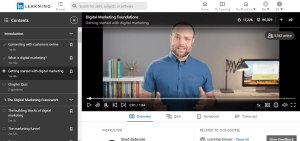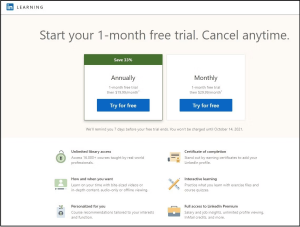- 19 September 2023
- 93
Mastering Online Learning: 7 Tips to Choose the Perfect Course

7 Tips to Choose the Right Online Courses for Upskilling
In today’s fast-paced world, continuous learning and skill development are essential for personal and professional growth. The availability of online courses has made acquiring new skills more accessible than ever before. However, with a plethora of options to choose from, selecting the right online course can be challenging. To help you make informed decisions and embark on your upskilling journey effectively, here are seven detailed tips:
1. Decide the Skill You Want to Learn
Before embarking on your journey to find the perfect online course, it’s essential to begin with a clear understanding of the skill you wish to acquire. Here’s a detailed breakdown of this step:
In today’s rapidly evolving job market, continuous learning and skill development are prerequisites for personal and professional growth. To make the most of your online learning experience, you must first pinpoint the specific skill you intend to acquire. This process involves self-assessment and aligning your chosen skill with the most sought-after abilities in your industry.

Take the time to assess your current strengths and weaknesses. Reflect on your career goals and identify the skills that are in high demand within your field. Consider using self-assessment tools or personality tests to gain insights into your abilities and preferences. Once you’ve identified your target skill, you’ll be better equipped to search for courses that cater to your needs.
2. Explore the Platforms for Online Learning
Selecting the right online learning platform is a pivotal decision that can significantly impact your learning experience. Here’s a detailed explanation:
The abundance of online learning platforms offers a wide range of courses, teaching styles, and user experiences. Your choice of platform should align with your learning objectives and preferences. While popular platforms like LinkedIn Learning and Udemy are well-known, it’s essential to explore various options.

Research and compare online learning platforms to find the one that best suits your needs. Look for platforms that offer a diverse course catalog in the skill area you’re interested in. Consider factors like user interface, accessibility, and ease of navigation. Some platforms may offer free trials or previews, allowing you to test their features before committing. Don’t hesitate to explore lesser-known platforms, as they may provide unique courses and perspectives.
3. Look for the Course Description
A thorough examination of the course description is crucial to ensuring that a course aligns with your learning goals. Here’s a detailed breakdown:
The course description serves as your window into what a course has to offer. It provides valuable information about the course’s content, structure, and prerequisites, helping you make an informed decision.

Pay close attention to the course description, as it offers insights into the course’s duration, available resources, and any specific requirements you need to meet. Evaluate whether the course content matches your learning objectives and expectations. Take note of any prerequisites or prior knowledge required to excel in the course. Additionally, review the instructor’s bio to understand their expertise in the field.
4. Check Content Quality
The quality of course content significantly impacts your learning experience. Here’s a detailed explanation:
High-quality content is vital for an effective learning journey. It ensures that you receive clear and valuable information throughout the course. Evaluating content quality is essential for a successful online learning experience.

Some online learning platforms offer free preview videos or sample lessons that allow you to assess the quality of the course content. Look for consistency in delivering high-quality video and audio content. Assess the instructor’s teaching style, clarity of explanations, and overall production quality. Consistency in content quality enhances your chances of a meaningful learning experience.
5. Check Reviews and Ratings of the Course
Leveraging the experiences of others can provide valuable insights into the course’s strengths and weaknesses. Here’s a detailed explanation:
Reading course reviews and ratings allows you to tap into the collective wisdom of learners who have already completed the course. It helps you make an informed decision by considering the feedback of others.

Explore user reviews to gain a comprehensive understanding of the course’s pros and cons. A larger number of reviews often indicates transparency, as it reflects a broader range of experiences. While positive reviews are encouraging, don’t discount negative reviews entirely; they can provide a well-rounded perspective. Additionally, consider the course’s average rating, which represents the collective assessment of past learners.
6. Look for Certification
Considering whether a course offers certification upon completion can impact your professional profile. Here’s a detailed breakdown:
Course completion certificates, while not a guarantee of employment, can enhance your resume and visibility to potential employers. They provide tangible proof of your newly acquired skills.

Investigate whether the course you’re interested in provides a certificate upon successful completion. While certificates may not guarantee a job, they can bolster your credentials. You can showcase these certificates on professional networking platforms like LinkedIn to attract potential employers’ attention. Certificates can provide you with a competitive edge in the job market.
7. Check the Price and Flexibility Offered by the Course
Understanding the pricing structure and flexibility of a course is essential in making a cost-effective decision. Here’s a detailed explanation:
Online courses offer various pricing models, from individual course purchases to subscription-based access. Your choice should align with your learning pace and preferences, ensuring that you get the best value for your investment.

Compare the pricing plans of different platforms. Some platforms allow you to purchase individual courses, while others offer subscription models for broader access. Consider your learning frequency and long-term goals. A subscription model may be cost-effective if you plan for continuous learning. In contrast, individual course purchases may suit occasional learners who prefer flexibility in their learning journey.
Level Up Your Skillset With the Right Online Courses
Armed with these tips, you’re ready to embark on your upskilling journey. Online courses offer the flexibility to learn on your terms, making it possible to advance your skills while maintaining your 9-to-5 job or academic commitments. Whether you’re a professional seeking career growth or a student looking to expand your knowledge, online courses empower you to stay ahead in your chosen field. Don’t wait—start your learning adventure today!

